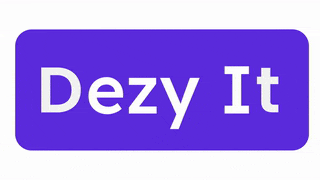Lack of Structure in UX process
- Chinmayee
- Sep 26, 2022
- 4 min read
Updated: Sep 27, 2022

The UX design process takes you on a one-of-a-kind experience. In today's technology world and a rapidly growing audience hungry for visual content, UX design has become increasingly important.
UX is more than finding the best process design and user interface for your customer. It aims to provide an overall positive experience that keeps the customer loyal to the brand, product, or service. UX process is a thorough process that includes Ideating, UX wireframe, Design Thinking, Prototyping, Testing, Feedback, and much more!
Designers love the freedom while working on a project, but it’s not all chaos. The UX design process is strategically planned and implemented for an optimal experience.
Now, I know what you must be thinking - “What’s the exact process while designing apps and websites?” Before we come to that, let’s ask -
What are the stages of a typical UX Process?
Different projects require different approaches to create a seamless experience for the user. For example, the way you would approach a corporate website differs from the way you would design a dating app.
The five stages of the Design Thinking process are:
Empathize
Define
Ideate
Prototype
Test

When we think of these stages, we need to keep in mind the five key phases -
Product definition
Research
Analysis
Design
Validation
Product definition - You have to identify the pain points and understand user behavior even before you start working on your product. It’s the foundation of the final product. You have to brainstorm with the stakeholders and discuss the flow of the project. You have to interview key stakeholders to gather insights about business goals. In product definition, the process goes as follows :
Stakeholder interviews - interviewing stakeholders so you can get valuable insights about business goals.
Value proposition mapping - You have to think about the crucial aspects of the value of the product, what is the product about, who will use it, and how you can make it optimized.
Sketching - brainstorming and creating a rough sketch of the product.
2. Research - This phase includes user research and market research. If you have a strong research ready, you can make sound design decisions and can save a lot of time and money down the road.

While doing your research, you must check all the boxes:
1) User perspective
2) User personas
3) Behavioural aspects of the user
4) Current user workflow
5) Valuable insights providing qualitative data like user's motivations, fears, needs, wants, etc.
3. Analysis - This phase aims to analyze the data collected in the research phase and ask questions like, "Why would the user prefer the product in that way?", "How can the product meet the expectations of the users?"
Creating User Personas and working on these questions by creating user stories is one of the ways to choose a strategy that works best for the product.
4. Design - When the user’s needs, wants and expectations are clear, designers can move to the design phase. This is the phase where you put all your research, analysis, and conclusions together and map it out to create an actual UI design.
An effective design phase is collaborative, and iterative and helps to design better UX faster. In the design phase, you visualize your ideas to come up with a broad range of design solutions.
You can do this by hand on a piece of paper, on a whiteboard, or with the help of a digital tool. Dezy It has all the tools you need to get started with your Design Sprint journey! You can save time and effort when you have access to all your design sprint tools and documents in one place! Dezy It has Design Sprints Solutions for all, where you can uncover insights and create deep value for the end-users.
After a fruitful brainstorming session, you move on to create a wireframe. A wireframe is a tool that helps designers visualize the basic structure of the product, including all the basic elements and how they would fit together for the product. This wireframe will act as a foundation for the prototype of the product.
The next thing is creating a prototype of the product with the help of the wireframes. Creating prototypes is not a cup of tea! It’s about creating an experience keeping in mind the actual interaction experience, the look and the feel of the product, for the user. Prototypes can be low-fidelity or high-fidelity.
Pro Tip: For large projects, designers can create design systems including various patterns, components, and styles that would help the designers and the developers stay on the same page.
5. Testing - Finally, it’s time to test the product in-house!
In this phase, the team members try the product regularly, checking and rechecking for any bugs or fixes that need to be done before the product is out there in the market.
You can even reach out to some people who represent your target audience. You can try different formats like moderated/unmoderated usability testing, focus groups, beta testing, and A/B testing.
You can use this qualitative and quantitative information from real-world users to create a better product for your audience.
The UX process is not just about designing, it's so much more!
It can be daunting to not be aware of the next step or when to strategize or what to research about. Unless you have a clear idea of the process you need to follow to take your product past the finish line, it's all chaos.
I hope this article helped you to create a structure for your UX process. You can check our
newsletter where we give you tips about all the latest UX trends and some amazing insights on great products every Friday! You can subscribe to our newsletter - It's Ezy with Dezy It - here.


コメント